Sean McBride's Blog, page 4
May 4, 2023
Blind Read Through: J.R.R. Tolkien; The Book of Lost Tales, part 1, The Theft of Melko
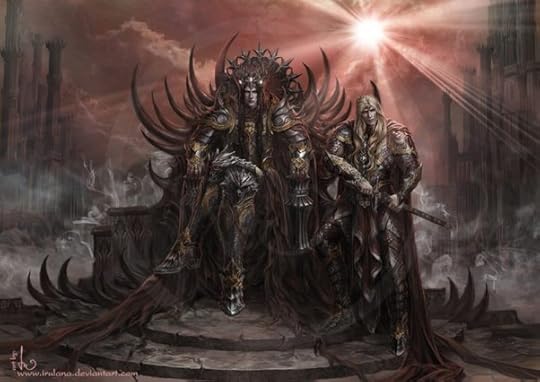
“Listen then, O Eriol, if thou wouldst [know] how it came that the loveliness of Valinor was abated, or the Elves might ever be constrained to leave the shores of Eldamar. It may well be that you know already that Melko dwelt in Valmar as a servant in the house of Tulkas in those days of the joy of the Eldalië; there did he nurse his hatred of the Gods, and his consuming jealousy of the Eldar, but it was his lust for the beauty of the gems for all his feigned indifference that in the end overbore his patience and caused him to design deep and evilly (pg 140).”
Welcome back to another Blind Read! This week we kick off the events which changed the face of Eä and how those events changed from the original writings to the publication of The Silmarillion.
This chapter, more than anything before, indeed shows how Tolkien’s ideas shifted over time. The designs of Melkor and Sauron are so interwoven in this early work that the distinction between them when he finally got to writing about the later ages must have been muddled.
There are many instances in this chapter where Melkor is subversive, getting the Elves to believe in him and forsake the Valar. Melkor did some of this later in The Silmarillion, but most of his actions were facilitated out of anger and jealousy. Melkor is Tolkien’s iteration of Lucifer, the fallen angel who once desired to do positive things, whereas Sauron is evil when his visage hits the page.
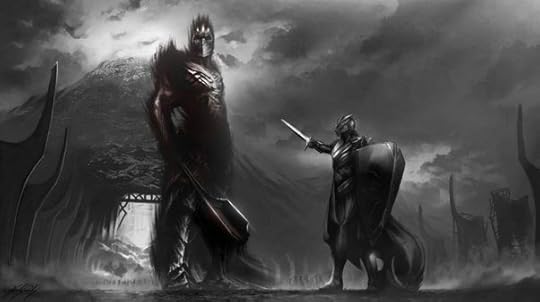
In the beginning, Melkor was one of the Valar. He was around before the world was created, and indeed, it was through the music of the Valar (called Ainur) that the world was created. Melkor was disparaged early on because his music was discordant and didn’t match up with the music of the other Valar. His anger grew like a young child playing off-key in a band. The other Valar were upset with him because their music had themes, and with Melkor creating the music the way he was, the themes had strange off notes, making unintended things.
You may have heard the phrase: “There are older and fouler things than Orcs in the deep places of the world.” These “fouler things” were created from this discordant music as the world was being made. Thus, they are deep within the world, almost Cthulhu-godlike creatures born into the depths of the world, undescribed but horrible to behold.
Because of this mistake, The Valar treated Melkor differently. Then when the Eldar awoke, he perceived them as being favored over himself, so he folded in on his own conscious and acted out of hate and jealousy.
Sauron, on the other hand, was Melkor’s servant (Maiar), and it is possible that Sauron saw what was happening to Melkor and decided to fight against the world because of the treatment his master and Dark Lord received. However, he wasn’t written that way. Instead, Sauron wanted to rule the world from the moment he was created and was very subversive in his tactics.
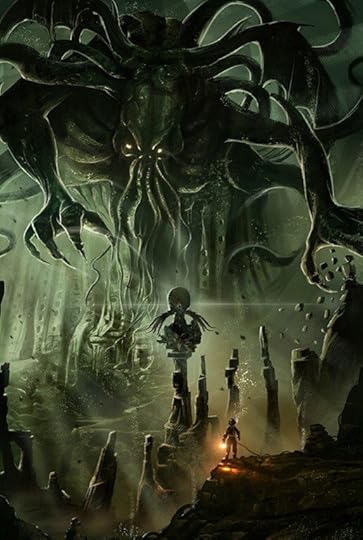
In this chapter, Tolkien blends the two different personalities. First, Melkor tries to get into Fëanor’s head and turn him against the Valar and the other Noldor; however, in The Silmarillion, Fëanor is too clever, and Melkor attempts to corrupt Fëanor causes the Eldar to hate The Dark Lord eternally. In The Book of Lost Tales, Melkor ends up with different motivations entirely:
“At length so great became his care that he took counsel with Fëanor, and even with Inwë and Ellu Melemno (who then led the Solosimpi), and took their rede that Manwë himself be told the dark ways of Melko (pg 141).”
Melkor assists Fëanor in creating the Silmarils, much like Sauron helped Celebrimbor create the Rings of Power.
Tolkien doesn’t specifically call this out as a motivation for stealing the gems back; in fact, they seem to be an afterthought:
“With his own hand indeed he slew Bruithwir father of Fëanor, and bursting into that rocky house that he defended laid hands upon those most glorious gems, even the Silmarils, shut in a casket of ivory (pg 145).”
Melkor was after the gems because he wanted to take the Eldar’s possessions and knew they considered their jewels highly valuable.
The Silmarils themselves were still of high quality because they came from the starlight of Aulë’s forge, but in the writing of this chapter, it feels as though they were an afterthought for Tolkien.
Christopher (Tolkien’s son and editor) contends that Melkor is only there to steal the gems, and it wasn’t until later iterations of the story that the Silmarils became more critical.
Thinking like a writer, Tolkien always intended to have the Silmarils be necessary, but not because an Elf made them (or Gnome in this early version). I think his intent in the Book of Lost Tales was to have the Silmarils be so crucial because of the influence of the Valar. Still, as he progressed in history, he realized that it was the Eldar’s story, not the Valar’s, so he adjusted it to have Fëanor be of an original heritage (he became Finwë’s son instead of the unknown Bruithwir) and make the world-breaking Silmarils.
Later, when he had beings of a short life (Men and Hobbits), and everyday events played a much more critical role in their life, he adjusted the story to have Sauron be involved in creating the Rings of Power. It is a different story, and there are other stakes, not to mention that Sauron is a Maiar, not a Valar; thus, his power level isn’t as complete. The gods might not come down from the heavens to take care of someone lesser than them, where Melkor was one of their own and thus their responsibility.
While reading this book, you must remember that it was never meant to be published. Christopher Tolkien compiled the Book of Lost Tales from notebooks and scraps of paper. It was the Silmarillion that Tolkien himself meant to publish. Christopher published The Book of Lost Tales for the same reason I’m writing a blog about it; people who love Lord of the Rings might want to know the evolution of the story to what it eventually became.
Join me next week as we take a break from the Book of Lost Tales! I will give an update on current and future projects and cover some very exciting things to come!
April 27, 2023
Blind Read Through: J.R.R. Tolkien; The Book of Lost Tales part 1, The Making of Kôr
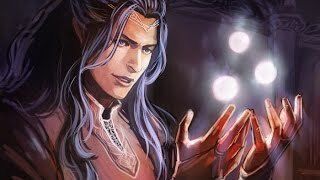
“Now therefore do the God bid the Elves build a dwelling, and Aulëaided them in that, but Ulmo fares back to the Lonely Island, and lo! it stands now upon a pillar of rock upon the seas’ floor, and Ossë fares about it in a foam of business anchoring all the scattered islands of his domain fast to the ocean-bed (pg 121).”
Welcome back to another Blind Read! This week we get a more significant image of who the Elves, and each clan of Elves, were.
The first thing we have to cover is the making of Kôr:
“Behold there is a low place in that ring of mountains that guards Valinor, and there the shining of the Trees steals through from the plain beyond and guilds the dark waters of the bay of Arvalin, but a great beach of finest sand, golden in the blaze of Laurelin, white in the light of Silpion, runs inland there, where in the trouble of the ancient seas a shadowy arm of water had groped in toward Valinor, but now there is only a slender water fringed with white.At the head of this long creek there stands a lonely hill which gazes at the loftier mountains…Here was the place that those fair Elves bethought them to dwell, and the Gods named that hill Kôr by reason of its roundness and it’s smoothness (pg 122).”

This soft hill became the home of the Noldori Elves and the Teleri Elves. But, unfortunately, the only group that wanted to live in a new space were the Solosimpi Elves, the favorite of Ulmo the sea Valar. So the Solosimpi stayed out on Tol Eressëa, a place that “is held neither of the Outer lands or of the Great Lands where Men after roamed (pg 125).”
The Solosimpi became the favorite of Ulmo because they decided to stay away from Valinor. He taught them music and sea lore and lived in general harmony. They lived in the caves by the sea in connection with all other living creatures of the land. Valinor, at the time, had very few creatures (primarily sprites and fae), so the Solosimpi were better equipped to deal with strife because they could see the circle of life in motion. They could see creatures being hunted and killed so that others could live. They had worldly wisdom.
They also came to love birds for their beauty, simplicity, and grace. Ossë (Ulmo’s fellow water Valar, who in The Silmarillion became a Maiar), wanted to stoke this love, but he also didn’t like the Solosimpi to be estranged from their kin; “For lo! there Teleri and Noldoli complain much to Manwë of the separation of the Solosimpi, and the Gods desire them to be drawn to Valinor; but Ulmo cannot yet think of any device save by help of Ossë and the Oarni, and will not be humbled to this (pg 124).”
Yet again, we see Ulmo’s jealousy. The reason for the change in character between this book and The Silmarillion must be the change from the lesser Valar being siblings and children of the Valar to becoming a Maiar. This Sea-change of the power dynamics was twofold; 1. to make it a more straightforward narrative and include fewer names (which anyone who read The Silmarillion would attest to), and 2. To make the motivations of the Valar more clear. Melkor is the one who is supposed to be jealous and to take out that jealousy on the Eldar, not the other Valar. If they held these same jealousies, then both the Valar would be diminished, and Melkor wouldn’t be as much of a “Dark Lord” because others with his power level feel the same way.
Still, it is interesting to see that the transition, and the reality, of the concept of anger and jealousy in The Book of Lost Tales is much more feasible than in The Silmarillion. Somehow the events in this book make the Valar, just that much more relatable.
Going back to the quote above, Ulmo was not to be outdone by any other Valar, so he facilitated “the first hewing of trees that was done in the world outside of Valinor (pg 124).”
He partnered with Aulë, and together they “sawn wood of pine and oak make great vessels like to the bodies of swans, and these he covers with the bark of silver birches, or…with gathered feathers of the oily plumage of Ossë’s birds. (pg 124)”
Remember that the Solosimpi were in the later versions of the Teleri Elves, so this is the first iteration of the Lothlórien “Swan Shaped Barge,” which we also briefly glimpse Galadriel on in The Lord of the Rings.
 Art by Billy Mosig
Art by Billy MosigThe Noldor seemed to be flourishing on their island, and with the assistance of the Valar, each tribe seemed to specialize in different practices. Unfortunately, this eventually ended the Golden Age of the Eldar in Tol Eressëa (Kôr).
“Then arose Fëanor of the Noldoli and fared to the Solosimpi and begged a great pearl, and he got moreover an urn full of the most luminous phosphor-light gathered of foam in dark places, and with these he came home, and he took all the other gems and did gather their glint by the light of white lamps and silver candles, and he took the sheen of pearls and the faint half-colours of opals, and he [bathed?] them in phosphorescence and the radient dew of Silpion, and but a single tiny drop of the light of Laurelin did he let fall therein, and giving all those magic lights a body to dwell in of such perfect glass as he alone could make nor even Aulë compass, so great was the slender dexterity of the fingers of Fëanor, he made a jewel… Then he made two more…he those jewels he called Silmarilli (pg 128).”
Fëanor, in this early iteration, is just an unnamed Noldor, not Finwë’s direct lineage, but he still creates the Silmarils, which starts all the events of the First Age in motion.
There is very little said about Fëanor in this version. In the Silmarillion, he is prideful and firey (in fact, that is what his name implies in the language of the Eldar). Still, here it is just one of a race who is excellent at crafting and can infuse the light of the Trees of Valinor (Think the first magic contained in the land. Early and Old magic, potentially stronger than anything that comes after) into these pearls.
Join me next week as we see if there are differences in how Morgoth tries to steal these Silmarils in “The Theft of Melko!”
April 20, 2023
Blind Read Through: J.R.R. Tolkien; The Book of Lost Tales, part 1, The Coming of the Elves
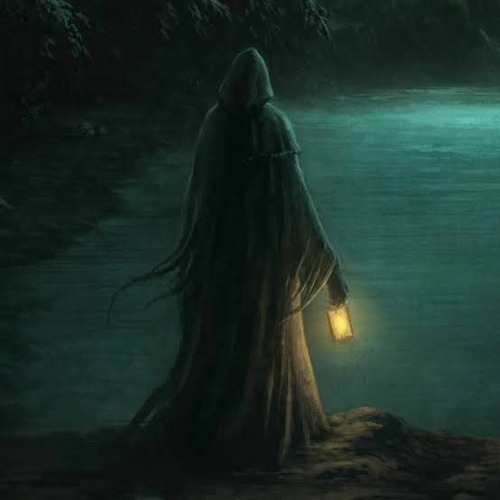
“There was a stir among the distant trees and words were spoken suddenly, and feet went to and fro. Then did I say what is this deed that Palúrien my mother has wrought in secret, and I sought her out and questioned her, and she answered: ‘This is no work of mine, but the hand of one far greater did this. Ilúvatar hath awakened his children at the last – ride home to Valinor and tell the Gods that the Eldar have come indeed (pg 114)!'”
Welcome back to another Blind Read! This week we mark the entrance of the Eldar into Beleriand and Valinor, which also signifies a dramatic shift in the lives of the Valar.
The introduction of the Elves in these early works is a bit of a departure from The Silmarillion. Tolkien wrote this chapter with Valar filled with enthusiasm with their newfound “children.” They ran about Valinor cheering and crying out in joy. Oromë even interrupts Varda creating the Seven Stars from Aulë”s forge as he “shouts aloud so that all the ears in Valmar may hear him: ‘Tulielto! Tulielto! They have come – they have come (pg 114)!'”
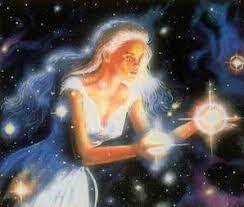
This sounding call is echoed by many of the other Valar until they work themselves into a frenzy and end up doing something foolish. “Great joy blindeth even the forewisdom of the Gods (pg 114).”
Tolkien is referring to Manwë releasing Melkor from Angaino “before the full time of his doom (pg 114),” though he still kept Tilkal (his fetters or manacles) on his wrists and ankles. In fact, in this telling, the Tilkal stayed on him forever as a reminder of the ages he spent in bondage because of the trickery of the Valar. Manwë releases him because it’s such and event, and such a celebration that even Melkor should be involved. If this seems impetuous and over the top, it absolutely is.
Tolkien understood this and downplayed this excitement in The Silmarillion, though part still exists. The strange twist is that the only Valar who is not excited about the Eldar’s arrival in The Book of Lost Tales is Ulmo. It took me a little introspection to see what Tolkien was trying to sublimate, and it goes back to one of the quotes above. The Valar were blinded by their excitement, making them ignore their “forewisdom” in more than one sense.
In The Silmarillion, Ulmo was the Valar who was said to love the Eldar more than any other, and it was strange to me that he went against the will of those Valar to have the Eldar come to Valinor.
But why were the Eldar so happy that the Eldar had come? “and it was not until that hour that the Gods knew that their joy had contained a flaw, or that they had waited in hunger for it’s completion, but now they knew that the world had been an empty place beset with loneliness having no children for her own (pg 114).”
It wasn’t until the world was populated that the Valar realized the point of their existence. It was about creating a world for these other beings to exist. But unfortunately, they were so hung up on how their projects were progressing and angered at Morgoth for (Melkor) interrupting or ruining those projects that they didn’t realize that the world they had created didn’t have a soul. The coming of the Eldar made that soul in the world.
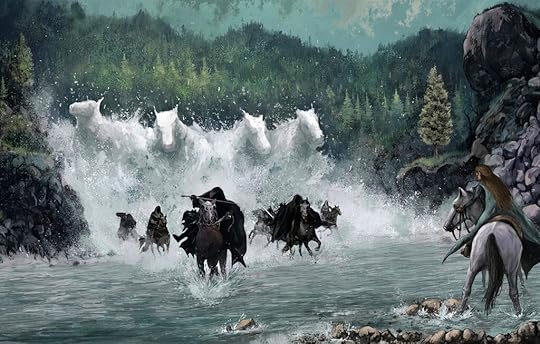
So why did Ulmo act against them? Because he understood this fundamental tenant because he helped create them. The Eldar were Ilúvatar’s children, but they were born next to “Koivië-néni or the Waters of Awakening (pg 115).” Remember that Ulmo is the Vala of the seas and water, and, in The Fellowship of the Ring, when the horses form in the river that wipe out the Dark Riders following the Hobbits and Aragorn, they were a creation of Ulmo and an indication of his interfering in the lives of the people of Middle-earth. Glorfindel says a prayer to Ulmo in that scene (which was changed to Arwen in the movie), and Ulmo helps them to Rivendell.
Ulmo immediately connects with the Eldar because of his association with them through the Koivië-néni (or Cuiviénen in The Silmarillion). Ulmo knows that exposing the Eldar directly to the immense knowledge of the Valar is a mistake that could, and does, end up having far-reaching issues later on in history. Ulmo believes the Eldar should live in the world and have their own life experiences rather than be involved with gods (or angels).
But Ulmo is outvoted, and three Eldar come in a procession to Valinor, one from each tribe, and we get this loaded paragraph:
“Great was the stir and wonder now about the waters of Koivië, and its end was that three of the Eldar came forward daraing to go with Nornorë, and these he bore now back to Valinor, and their names as the Elves of Kôr have handed them on were Isil Inwë, and Finwë Nólemë who was Turondo’s father, and Tinwë Lintö father of Tinúviel – but the Noldoli call them Inwithiel, Golfinweg, and Tinwelint. Afterward they became very great among the Eldar, and the Teleri were those who followed Isil, but his kindred and descendants are that royal folk of the Inwir of whose blood I am. Nolemë was lord of the Noldoli, and of his son Turondo (or Turgon as they called him) are great tales told, but Tinwë abode not long with his people, and yet ’tis said lives still lord of the scattered Elves of Hisilómë, dancing in its twilight places with Wendelin his spouse, a sprite come long long ago from the quiet gardens of Lórien; yet greatest of all the Elves did Isil Inwë become, and folk reverence his mighty name to this day (pgs 115-116).”
I’m sure you don’t recognize many of those names because Tolkien changed them around (and I suspect they changed which tribe would be which in their ultimate storyline). Isil Inwë later became Ingwë, the lord of the Vanyar, Finwë stayed Finwë lord of the Noldor, but Turgon moved from son to grandson (with the notorious Fëanor, creator of the Silmarils, in the middle). Tinwë Linto became Thingol, and Wendelin moved from a Sprite to the Maiar Melian.
The Eldar who went to Valinor were Ingwë, Finwë, and Elwë (Thingol), as spokespeople for the Eldar. They were met with great fanfare, but the omen of great strife began on that first visit to Valinor. Where Melkor “often did he lie to the Noldoli afterwards when he would stir their restlessness, adding beside all truth that he alone had withstood the general voice and spoken for the freedom of the Elves (pg 177).”
Join me next week as we see where the Elves go next with “The Making of Kôr.”
April 13, 2023
Blind Read Through: J.R.R. Tolkien; The Book of Lost Tales, part 1, The Chaining of Melko
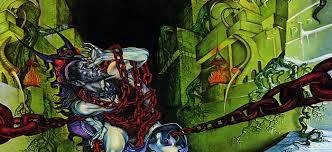
“‘Yet nothing do you know of the coming of the Elves, of the fates wherein they move, nor their nature and the place that Ilúvatar has given to them. Little do you reck of that great splendour of their home in Eldamar upon the hill of Kôr, not all the sorrow of our parting. What know you of our travail down all the dark ways of the world, and the anguish we have known because of Melko; of the sorrows we have suffered, and do yet, because of Men, of all the fears that darken our hopes because of Men? Know you the wastes of tears that lie between our life in Tol Eressëa and that time of laughter that we knew in Valinor? O child of Men who wouldst be sharer of the fates of Eldalië, what of our high desires and all those things we look for still to be – for lo! if you drink this drink all these must you know and love, having one heart with us – nay, even at the Faring Forth, should Eldar and Men fall into war at the last, still must you stand by us against the children of your kith and kin, but until then never may you far away home though longings gnaw you…(pg 97-98)”‘
Welcome back to another Blind Read! This week we delve back into The Book of Lost Tales and discover how the Valar captured Melkor and (in this iteration) what turned him entirely to the Dark Side.
The quote above is the perfect transition exposition to get into the meat of the chapter. The section comes from Meril-i-Turinqui “in her Korin of elms (pg95).”
 Meril by Sandrine Gestin
Meril by Sandrine GestinMeril tells Eriol that he knows nothing of the Elves and to stop making assumptions based on other stories he has heard or what he has seen. This dialogue is also a turning point in the book because everything previously has been from the perspective of Eriol and thus from the standpoint of “Men.” What Meril is trying to introduce is that the Elves have had a completely different story and perspective. That story is directly tied to the fate of Melkor and what happened when the Valar decided to imprison him.
When Oromë “blew great blasts upon his horn as though he would awake the grey rocks to life and lustihood (pg 99).” He used his music to create the lands where the Elves would live. This land inhabited many creatures who came from Mandos and traveled with Ilúvatar, but some came “from the fortresses of the North where Melko then dwelt in the deep dungeons of Utumna. Full of evil and unwholesome were they; luring and restlessness and horror they brought, turning the dark into an ill and fearful thing, which it was not before (pg 99).”
This transgression was the last straw for the Valar. They had put up with Melko’s betrayal in building the fake lamps, which melted, but now he was bringing elements into the world that they intended to keep away from the Children of Ilúvatar.
I find it fascinating that these “gods” were so petty. Of course, Melkor was somewhat unreasonable because of his anger and jealousy, but the way Tolkien writes the book, it seems almost more like he’s more a Loki, or trickster god, than an actual menace.
It seems that the Valar themselves are the vengeful gods (which will come out more at the beginning of the next chapter) because they decided that the only way not to have Melkor interfere or change their ultimate vision was to chain and imprison him. “Behold, Aulë now gathered six metals, copper, silver, tin, lead, iron, and gold, and taking a portion of each made with his magic a seventh which he named, therefore, tilkal (pg 100).”
This tilkal is the early iteration of Mithril, as the alloy is unbreakable. It was the ultimate tool to hold Melkor so he wouldn’t be able to cause any more mischief amongst the Valar or the world they had created. Aulë “made two manacles of tilkal only and four fetters likewise. Now the chain was named Angaino, the oppressor, and the manacles Vorotemnar that bind for ever, but the fetters Ilterendi for they might not be filed or cleft (pg 100-101).”
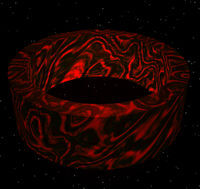
The Valar then did something akin to the devious Melkor. They went to his chambers to apologize and ask him to return to Valinor: “Behold, we have come and salute you here in your own halls; come now and be in Valinor (pg 103).” They even tied Tulkas up (the Valar who hated Melkor the most) in Angaino and brought him before Melkor as an offering that they wanted to work with him.
Their plan had foresight because Melkor’s pride was his fall. “‘Nay first,’ said he, ‘wilt thou come Manwë and kneel before me, and after you all the Valar; but last shall come Tulkas and kiss my fooot, for I have in mind something for which I owe Poldórëa no great love (pg 103).”
The Valar catered to those demands, but the sight of the mighty Valar paying homage to a sneering Melkor angered the conspirators even further; “so fiercely did wrath blaze up in the hearts of Tulkas and Aulë at that sight that Tulkas lept across the hall at a bound despite Angaino, and Aulë was behind him and Oromë followed his father and the hall was full of tumult (pg 104).”
They brought Melkor back to Valinor as a prisoner, but this is the point where Melkor became the Dark Lord. He cursed the Valar and “writhed in rage at the name of Eldar and of Men and at his own impotence (pg 105).”
In this iteration, he was chained for ages, and his anger and despair grew through that time. Finally, he became hated incarnate because the only thing he could think about for his eternal life was revenge and to escape those bonds.
The Valar wanted to save the world they created and have everything be perfect, but what ended up happening was they created a darkness that they didn’t understand how to control. Their hubris created the monster that would inevitably destroy Beleriand, even though they thought they were protecting the world and it’s future by eternally imprisoning one of their own.
Join me next week as we move into the next chapter, “The Coming of the Elves and the Making of Kôr!”
April 6, 2023
Blind Read Through: J.R.R. Tolkien; The Return of the King

“‘I am with you at present,” said Gandalf, “but soon I shall not be. I am not coming to the Shire. You must settle its affairs yourselves; that is what you have been trained for. Do you not yet understand? My time is over: it is no longer my task to set things to rights, nor to help folk to do so. And as for you, my dear friends, you will need no help. You are grown up now. Grown indeed very high; among the great you are, and I have no longer any fear at all for any of you.'”
Welcome back to another Blind Read! This week will be the last of the “not quite blind” reads for Tolkien as we discuss The Return of the King before heading back into The Book of Lost Tales.
To begin, I want to reiterate that if you have not read these books yet, purchase this one first and read the appendices before you go back and read The Fellowship of the Ring. The Lord of the Rings is so much better when you have the history of the Legendarium under your belt, and the appendices give enough of this information to get a basic understanding of what happened in The Silmarillion.
To that point, The Dúnedain was a concept I had a challenging time with when I first read them. Why did Tolkien spend so much time discussing their armor, and what was the Star of Eärendil on their forehead?
I didn’t realize before reading The Silmarillion that Eärendil was Elros’ and Elrond’s father. He saved the world in the First Age by sailing to Valinor and getting the Valar to assist in the war against Morgoth.
That voyage was such a big deal because it was against the will of the Valar for a human to sail to Valinor (Eärendil was half-elven, but you get the point). Eärendil knew he would die, but he also knew that it would save the world, so he sacrificed himself for the betterment of the people of Beleriand (I.E. Middle-earth of the First Age).
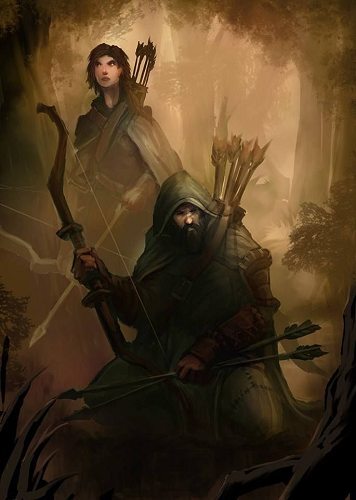 Dunedain Rangers (uncredited)
Dunedain Rangers (uncredited)For his bravery, the Valar made him immortal, and he would sail across the cosmos in his ship for the rest of eternity. Hence the Star of Eärendil guided the Dùnedain on their helmets (Tolkien brings up the helmets and the signet many times, especially before battles).
So why does the Dùnedain get the star and no one else? The book described them as Rangers like Aragorn, first introduced as Stryder. Who are these guys?
They are the living descendants of the Númenoreans.
Elros and Elrond chose to be Human or Eldar because they were both Half-elven (remember their parents were Half-elven). Elrond chose to be Eldar, but Elros chose to be human. Because he had the Eldar blood in his veins (the people who cannot die, but by battle or disease), the humans of his line were blessed with a much longer life. They also had the blessing of the Valar, which extended their lives even further, and this group became the Númenoreans.
They thrived and ruled humanity for many years from their island kingdom, but eventually, there was a split, made into a chasm thanks to Sauron. The faithful Númenoreans eventually became the Dùnedain, and the “Black Númenoreans” either died off or became part of Sauron’s cadre.
Sauron’s Luitenant (or The Mouth of Sauron), whom we see at the Battle of Morannon (The Battle at the Black Gate), is one of the Black Númenoreans who fell for Sauron’s lies and followed him into Mordor.
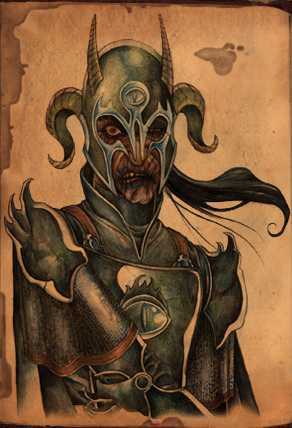 The Mouth of Sauron (uncredited)
The Mouth of Sauron (uncredited)Much of this information is lost if you don’t read The Silmarillion or the Appendix at the end of The Return of the King.
But why read the book when the movies are so spectacular? Because you won’t get the end of this book, The Scouring of the Shire.
Saruman escapes from Orthanc and wanders the roads as a defeated man, or at least we are made to think this. Instead, we find out he orchestrated a greedy Hobbit to take over the Shire and employ “guards” who were goblins and ruffians Saruman controlled. These guards then took over the Shire entirely at the end of the book. It isn’t until our four Hobbits head back to the Shire and discover this that they become even larger heroes.
This event is the first time in all the books that the Hobbits take on enemies and fight them head-on without help. All of their experiences leading up to this make them able to be self-sufficient beings, even in the face of such a ruthless character as Saruman. The metaphor here is that they are finally grown, no longer children now that they are back from war, and aren’t putting up with anyone’s crap.
I hated this when I read it years ago, but there is a bit of poetic justice in it, as it brings these characters full circle.
The Hobbits are the ones who kill Wormtongue. Saurman throws Grima under the bus for the last time, and Wormtongue takes his knife and cuts Saruman’s throat, only to be shot to death with arrows by the Hobbits.
It seems a fitting end, The death of Saruman. But the fact that Saruman is an Istari, and once he “died,” he turned to mist, which gave me pause. We have seen this before. Saruman is not actually dead.
There are two different reasons for this. The first is Saurman is an Istari, which means he is a Maiar, one step down from the immortal Valar. Maiar are also eternal. Gandalf is a Maiar; and he died earlier in Fellowship of the Ring, only to be resurrected in The Two Towers. However, his memory was hazy on who he was before because his (their?) proper form is not the man we see walking around, but a god-like wizard from Valinor sent at the beginning of the Third Age to help fight against Sauron.
If Gandalf can come back, then it stands to reason that Saurman can also come back.
The second reason I’m sure Saruman will be back is that Sauron is a Maiar as well. In the Akallabeth (The second to last chapter about the Second Age in The Silmarillion), Sauron is killed during The Drowning of Númenór, but he becomes a mist and travels back to Mirkwood forest. This half-death is precisely how Sarumon’s death is described at the end of the Scouring of the Shire.
But does that mean that Sauron will also return because he is Maiar? Unfortunately (unfortunate for us because of the stories, fortunate for the people of Middle-earth!), no, and that’s because of J.K. Rowling.
No, not really, but she did seem to get an idea for Voldemort out of Tolkien. Sauron’s bodily form was defeated at the end of the Second Age when Isildur cut the One Ring from his hand. He was defeated because, to create the One Ring, he had to infuse all of his power into the Ring. Most of his life essence went into the One Ring when he created it. Yep, you guessed it, the One Ring is Sauron’s Horcrux.
When Gollum falls into the lava of Mount Doom with the Ring and destroys it, Gollum, in essence, destroys Sauron. So now, who’s the real hero?
Join me next week as we begin the next chapter of The Book of Lost Tales, “The Chaining of Melkor!”
March 30, 2023
Blind Read Through: J.R.R. Tolkien; The Book of Lost Tales, Part 1, Religion of Valinor
 Melkor as Satan
Melkor as Satan“So fair were these abodes and so great the brilliance of the trees of Valinor that Vefántur and Fui his wife of tears might not endure to stay there long, but fared away for to the northward of those regions, where beneath the roots of the most cold and northerly of the Mountains of Valinor, that rise here again almost to their height nigh Arvalin, they begged Aulë to delve them a hall. Wherefore, that all the Gods might be housed to thier liking, he did so, and they and all their shadowy folk aided him. Very vast were those caravans that they made stretching even down under the Shadowy Seas, and they are full of gloom and filled with echoes, and all that deep abode is known to Gods and Elves as Mandos.”
Welcome back to another Blind Read! This week we conclude the chapter “The Coming of the Valar and the Building of Valinor” with a philosophical conclusion.
I’ve been trying not to spend too much time reviewing the events of the chapter as I go through because that would make these essays neverending and redundant, so the point is to show a much deeper and more analytic approach to Tolkien’s work.
That being said, what I love about this chapter, more so than anything in The Valaquenta (The Second Chapter of the Silmarillion covering these events) is that Tolkien was leaning into his religion. Because these stories are supposed to be a founding mythology for our world, Tolkien created a semi-Christian theology in these early chapters.

The first clue was that he calls the Valar gods (small g) throughout this book; however, he conspicuously dropped that moniker in the Silmarillion, choosing to have them be “beings of great power.”
The adjustment of the Valar might seem like a slight change, but it shows how Tolkien wanted to shape the world’s religions, just like he shaped the landscape and the language.
The Valar take a step down from being gods and become something more akin to Angels. They know what is happening in Middle-earth, and in fact, they foretell it through their music, but rarely do they interject with their power, preferring the people of Middle-earth to deal with their troubles on their own. Ulmo was the only Valar who interposed himself, and that’s because he was the Vala of water, so he was always in some way amongst the residents of that land.
There is also Melkor, who plays a much more sinister role in The Book of Lost Tales. Melkor in The Silmarillion (the later version of history) begins as an almost sympathetic character. He is one of the Valar who feels slighted by what he was given, as opposed to what the other Vala were given. Then when Ilùvatar’s children come around (Eldar and Men), he becomes jealous, which leads to his downfall. Yes, there are times early in the book when Melkor does mischievous deeds, but that’s just what they are. It isn’t until much later, once he joins forces with Ungoliant, the giant spider queen (and mother of Shelob), kills the Trees of Valinor, and steals the Silmarils, that he genuinely becomes evil.
But why does he become evil? Because he stays in his fortress in Angband and stews on his perceived (or real) slights against him. Those years upon years of hate compounding on each other until he can see the truth.
Melkor is Lucifer, which is why Tolkien wanted to change the Valar completely from gods to Angels. He tried to adjust his Christian theological worldview and overlay it with Middle-earth. That is not to say the goal was to make Middle-earth Christian, far from it, but his impetus for writing this Legendarium was that (in his opinion) no fantastic fairy tales came from England. On the other hand, England was a Christian country at the time of his writing, so it made sense that if he wanted to transition Middle-earth into our earth at a later age, he would have some similarities with the prevailing theology of the land at the time.
The concept of religion is even more profound when you read the quote which starts this essay.
Tolkien is trying to establish an afterlife here, but how does he do that with eternal gods and Elves which don’t die? By creating the halls of Mandos where two Valar live, Vefántur and Fui. These two were the rulers of the afterlife.
 Mandos by Anna Kulisz
Mandos by Anna KuliszVefántur created an underground world for the Eldar, “Thither in after days fared Elves of all clans who were by illhap slain with weapons or did die of grief for those who were slain (pg 76).” This place was “lit only with a single vessel placed in the centre, wherein there lay some gleaming drops of the pale dew of Silpion (pg 76).”
It is immediately apparent to me that Tolkien chose to use the tree of Valinor, which represents the silver light, or the moon, indicating that this was the twilight for the Elves that had passed. This place was an afterlife for brave and true Elves who fought for the right causes. Because Elves can only die when slain, Vê became a literal heaven for these Elves.
But if we have a heaven, then we must have a Hell:
“Thither cam sons of Men to hear their doom, and thither are they brought by all the multitude of ills that Melko’s evil music set within the world. Slaughters and fires, hungers and mishaps, diseases and blows dealt in the dark, cruelty and bitter cold anguish and thier own folly bring them here; and Fui reads their hearts. Some then she keeps in Mandos beneath the mountains and some she drives forth beyon dthe hills and Melko seizes them and bears them to Angamandi, or the Hells of Iron, where they have evil days (pg 77).”
Fui created purgatory for those who had done wrong, but she could read their hearts and see if they were genuinely horrible or just made bad choices. Those who were truly bad, with malevolent spirits, were sent to spend eternity in Angband with Melkor. At this early stage, Angband had not become what it later was (Morgoth’s fortress). Here, in this early iteration, Melkor has become the devil again and keeps the souls of the maleficent banded in the Hells of Iron.
Join me next week as we review The Return of the King!
March 23, 2023
Blind Read Through: J.R.R. Tolkien; The Book of Lost Tales, Part 1, The Building of Valinor
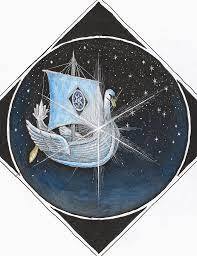
“There, said Aulë, would be a place well suited to great building and to a fashioning of realms of delight; wherefore the Valar and all their folk first gathered the most mighty rocks and stones from Arvalin and reared therewith huge mountains between it and that plain which now they name Valinor, or the land of the Gods (pg 70).”
Welcome back to another Blind Read! This week we continue our journey through the coming of the Valar as we delve into the Building of Valinor.
Last week we left off discovering who the Valar were, and this week we get into the details of the building of Valinor from the perspective of the Valar and Tolkien himself.
From our readings of The Valaquenta in The Silmarillion, we know that The Valar went to different parts of the world but wanted a place to call home. Valinor was that place. But even with the creation of Valinor, the Valar still had their various areas which they controlled. Ulmo ruled the deep seas, Manwë ruled the air and winds, etc. As these concepts formed in Tolkien’s mind (all early stages of developing the world), he envisioned this world as floating through the ethereal nature of space and time.

Remember that the original idea was that all of Middle-earth would eventually lead up to our historical timeline, acting as a sort of mythological foundation which he felt was lacking in the English tradition. He also based much of his work on Norse Mythological writings and practices, so what better format than having the entire Eä (read that as Earth) floating through the cosmic tapestry than on a Norse ship? Everything from Palisor to Valinor would live on this ship sailing through space.
Though he later dropped this idea for a globe world, it was evident that he loved the concept of the boat sailing through the cosmos and eventually re-used it. Enter Eärendil, arguably one of the essential characters in Middle-earth history. He and his wife Elwing stood up to Morgoth, and Eärendil sailed to Valinor with a Silmaril to protect it and make the Vala understand what they were up against. A mortal sailing to Valinor was prohibited, but instead of outright killing him (mainly because of his courage and selflessness in sailing there to save the world), they made him part of the cosmos, sailing his ship Vingilot “even to the starless voids.”
Tolkien never gave up on his ship idea, but he also never gave up on the concept of creating something from nothingness.
Moving back in time, as soon as the Vala created Valinor, it was still a dark place to be. “These were the days of Gloaming (Lomendánar), for light, there was, silver and golden, but it was not gathered together but flowed and quivered in uneven streams about the airs, or at times fell gently to earth in glittering rain and ran like water on the ground, and at that time Varda in her playing had set but a few stars within the sky (pg 69).”
The world was dark, and the only light came from the stars, yet the Vala wanted to build a complete world, so they came up with a rudimentary idea.
“Aulë suaded Melko to build two towers to the North and South, for he purposed to set upon them mighty lamps one upon each (pg 69).”
This passage differs from the Silmarillion because Melkor was a lousy actor. He created the world’s darkness and envied the other Valar and the Noldor, but more on that next week.
So they built these two lamps to light the world. “They sprang up through the lower air even to Ilwëand the stars, and Melko said they were of an imperishable substance of great strength that he devised; and he lied, for he knew that they were of ice (pg 69).”
Manwë and Varda gathered light from the stars and brought them down to fill these mighty lamps. Still, Melkor had tricked them because “it so happened that the blaze of those lights had melted the treacherous ice of the pillars of Melko, Ringil and Helkar, and great floods of water had poured from them into the Shadowy Seas (pgs 69-70).”
It is never outright stated why Melkor did this treacherous act. It is possible that Melkor was the Angel of Darkness, so he desired to keep the world in the Gloaming, but this is an early iteration of the mythos of Middle-earth, and Tolkien needed a Big Bad to push the story forward. So in the Book of Lost Tales, Melkor is just wrong from the start; there isn’t much in the text to brighten his character, much like Sauron.
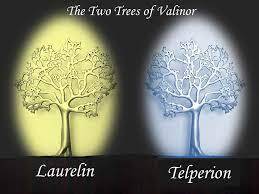
But what Melkor didn’t realize is that Ilúvatar set the theme of the world’s construction, so when the globes holding the light of the stars fell to the Earth, they buried themselves. “Then came Palúrien, even Kémi the Earth-lady, wife of Aulë, mother of the lord of forests, and she wove spells about those two places, deep enchantments of life and growth and putting forth of leaf, blossoming and yeilding of fruit – but she mingled no word of fading in her song (pg 71).”
Trees began to grow from those lights buried in the Earth, one they named Laurelin and the other Silpion. These trees ended the Gloaming and produced light from their leaves and blossoms until the coming of the Sun and the Moon. Later Tolkien renamed the second tree, changing it from Silpion to Telperion, but this is the earlier iteration of the creation of the Trees of Valinor.
I prefer this iteration to the published version with Yavanna signing the Trees into existence because it ties much more to the legendarium. First, the trees came from the stars and set into the ship that sails the cosmos. Then later, once the first age was coming to a close, we have Eärendil voyaging through the cosmos for all eternity on his ship. There is something poetic about closing the loop to me, which is also what I appreciate about being able to read the earlier stages of Tolkien’s work.
Join me next week as we complete “The Coming of the Valar and the Building of Valinor!”
March 16, 2023
Blind Read Through: J.R.R. Tolkien; The Book of Lost Tales, Part 1, The Coming of the Valar
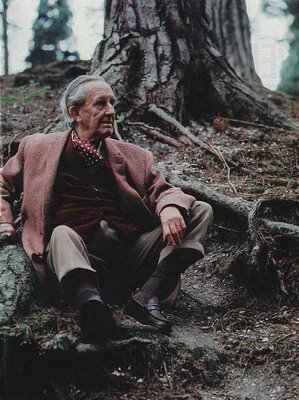
“In this dimness the Gods stalked North and South and could see little; indeed in the deepest of these regions they found great cold and solitude and the rule of Melko already fortified in strength; but Melko and his servants were delving in the North, fashioning the grim halls of Utumna, for he had no thought to dwell amongst the others, howso he might feign peace and friendship for the time (pg 69).”
Welcome back to another Blind Read! This week we move forward in the Book of Lost Tales and start on the third chapter, “The Coming of the Valar and the Building of Valinor.”
This chapter has three distinct cut points, so we’ll divide that up into three separate essays. The first will be about the entrance of the Valar into the tale and the theory behind Valinor, the second will be about the lamps of Valinor and the Vala dwellings, and the final will be about some new material we haven’t seen before.
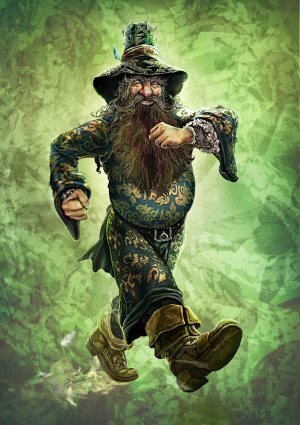
We pick back up with Eriol, the human traveler, speaking with Rúmil, the storyteller of Tol Eressëa. Eriol asks Rúmil, “I would still hear many things of the earliest deeds within its borders (Valinor); of the labours of the Valar I would know, and the great beings of most ancient days (pg 64).”
Rúmil regales Eriol with the names, purpose, and works of the Valar throughout this chapter, and it’s not an easy read. However, the first few chapters of the Silmarillion and The Book of Lost Tales are about the beginning of time, and they frame everything that comes after.
This chapter is so tricky because Tolkien goes for pages upon pages and describes the various Valar. Still, once we begin to get into the stories of the Eldar, which comprise the majority of The Silmarillion, the Valar don’t play much of a part.
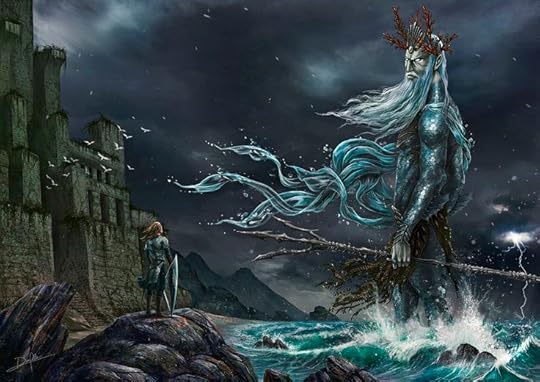 Ulmo Valar of Water
Ulmo Valar of WaterIn the Book of Lost Tales, Tolkien spends more time describing the various Vala and their roles. Some of their names change slightly between when the writing of this book (remember that The Book of Lost Tales is an amalgamation of editions edited by Christopher. In the appendices for this chapter, Christopher even mentions that he collected and put together the best story he could from notebooks and even scraps of paper his father used for notes.), and the publication of The Silmarillion.
In later works, Tolkien had differing power levels for the Valar, almost like rankings. The Aratar (Exalted Ones) were the most powerful of the group in this iteration, who comprised most of the Valar, whom Tolkien calls gods during the Book of Lost Tales, but we’ll discuss this more in a moment. Many Valar had children considered lesser Vala, and Tolkien eventually formed the title Fëanturi for them. There was also a third ranking of these gods in Valinor, whom Tolkien later got rid of entirely, which were very similar in every aspect of the Eldar, except in conception:
“About them fared a great host who are sprites of trees and woods, of dale and forest and mountain-side, or those that sing amid the grass at morning and chant among the standing corn at eve. These are the Nermir and the Tavari, Nandini and Orossi, brownies, fays, pixies, leprawns, and what else are they not called, for thier number is very great: yet must they not be confused with the Eldar, for they were born before the world and are older than its oldest, and are not of it, but laugh at it much, for they not somewhat to do with its making, so that it is for the most part a play for them (pg 66).”
Tolkien later eliminated the fae and streamlined the Valar by re-facing lesser Vala (Lórien and Mandos) as the Fëanturi, Sindarin for “Masters of Spirits,” no longer children of the Aratar. He decided that the Valar would no longer be gods because Ilúvatar was the one God, and the Valar were his servants, who had free will to use their music to create and adjust life on Eä. The conception took the Valar from gods to angels, and the angels of the lesser degree were the Maiar, better known as the servants of the Valar. The best-known Maiar are Sauron, a servant of Melkor (also known as Morgoth), and the Istari, the wizards. You may know them as Gandalf, Radagast, and Saruman.
Tolkien’s primary objective was to create a fantasy world that would eventually become our world in later epochs. He studied mythology and fairy tales his entire life and felt as though England didn’t have appropriate myths. The most famous tale at the time as a mythology for England was The Faerie Queen, and obviously, this is where Tolkien started.
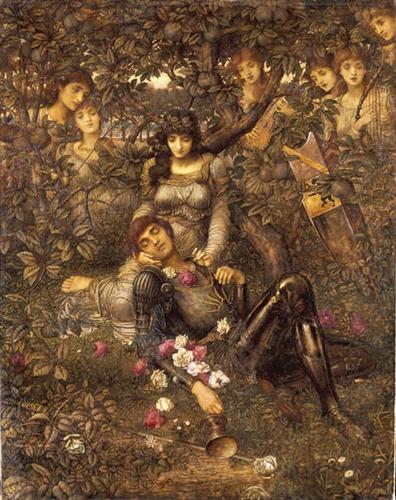 The Faerie Queen
The Faerie QueenI believe that over time he wanted to distance himself from Edmund Spencer (also, from everything I’ve read, I don’t get the feeling he liked The Faerie Queen that much), so getting rid of the fae was always going to happen, but he didn’t get rid of them entirely. If we dig down into the quote above and remove specific verbiage: “for they were born before the world and are older than its oldest, and are not of it, but laugh at it much… (pg 66),” it brings to mind a specific character.
In The Fellowship of the Ring, we are introduced to Tom Bombadil, “the oldest being of Middle-earth, ” constantly laughing and merrymaking. The Council of Elrond even considers giving him the One Ring for safekeeping but decides against it because he is so old that the Ring’s power would be boring to him. Tolkien filtered down the fae creatures in The Book of Lost Tales to Tom Bombadil in later works. He wanted to keep the concept of a fae creature, but he also needed to distance himself from what came before so that he might have a complete mythology.
So now we have the fourteen Valar (eight in the Silmarillion), but we still don’t know anything about their home. So come back next week for the second section of “The Coming of the Valar and the Building of Valinor!”
March 9, 2023
Blind Read Through: J.R.R. Tolkien; The Two Towers, Re-read
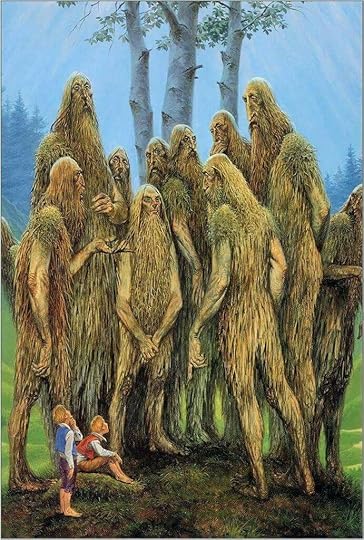 Ents, the Tree Shepherds
Ents, the Tree Shepherds“‘All right!’ he said, ‘Say no more! You have taken no harm, There is no lie in your eyes, as I had feared. But he did not speak long with you. A fool, but an honest fool, you remain, Peregrin Took. Wiser ones might have done worse in such a pass. But mark this! You have been saved, and all your friends too, mainly by good fortune, as it is called. You cannot count on it a second time. If he had questioned you, then and there, almost certainly you would have told all that you know, to the ruin of us all. But he was too eager. But come! I forgive you. Be comforted! Things have not turned out as evilly as they might.'”
Welcome back to another Blind Read! This week we’re back with a bit of a lie, this isn’t quite a Blind Read, but it’s been so long since I’ve read these books it might as well have been!
Before we discuss the books, I want to start by saying how amazed I am at how close the Movies were to the books. After reading them more critically, it is obvious how much the producers revered the core material. The ability to create a new medium that was inclusive of all who did not read the books but to be honest enough to the core material that hardcore fans love is a masterstroke in adaptation.
The only significant difference the movies had was in Fellowship because they took out the entire Tom Bombadil sequence (rightly so). Still, even then, I’ve seen deleted scenes where the hobbits get swallowed up by Old Willow. We’ll cover the differences in The Two Towers below, but we also dive more into the world’s lore.
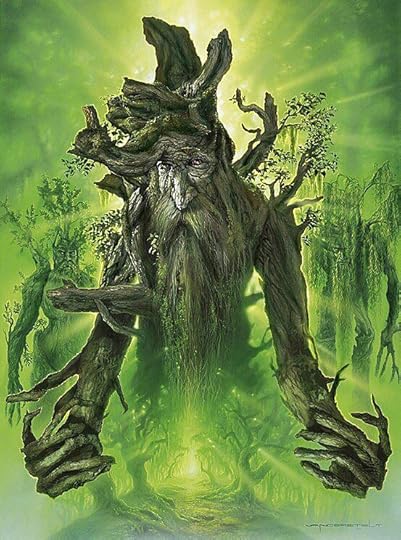
The first thing I’d like to mention is Treebeard and the Ents. The movie played up his slowness and mistrust, and where many lines are taken directly from the text, Treebeard was not very slow to action speaking of page count. Yes, he does suspect Merry and Pippin of being Orcs at first, but he quickly decides they aren’t. He then calls the council of Ents, and within a few pages, they choose to mount an attack on Orthanc. Again, the movie drew it out for drama, but the book had these events happening quickly.
However, the biggest oddity I noticed in the book was a seeming discrepancy between The Silmarillion and The Two Towers. When speaking of his race, Treebeard (also known as Fangorn) says the Elves created Ents. However, later in the book Gandalf (also known as Mithrandir, but more on that later) tells the remaining Fellowship that Fangorn is the oldest living creature on Middle-earth (remember that Elves, Vala, Maiar, and even Dwarves were created on Valinor). Tom Bombadil verifies this statement in The Fellowship of the Ring. I stopped and thought about this before I could move on because I know that Tolkien re-wrote much of the history and was still in his re-writes while writing The Lord of the Rings, but was there a discrepancy this bold?
I decided to go back and do some digging to figure it out.
Returning to The Silmarillion, I verified that Yavanna (the Vala who was the “lover of all things that grew in the earth”) created Ents as part of her music theme. Part of her reason for doing so was because of other creations, such as the Dwarves (who were created but kept at rest for many years). Yavanna feared the trees themselves would not have a means of protecting themselves against the push of other creatures’ industrial nature (something that echoes Tolkien himself), so she made the Ents to be shepherds and protectors of the trees and forests. Tolkien even had an early iteration where he called them Tree Ents because the word Ent was derived from the Old English word Eoten, meaning Giant, so they were Tree Giants meant to protect. Tolkien seeds this in The Fellowship of the Ring when Samwise relays a story from his cousin Hal, who saw a “treelike giant” north of the shire. This anecdote was Tolkien’s way of seeding their entrance into the books.
So we know that Yavanna created the Ents – why then does Treebeard say that they were a creation of the Elves? Looking back at the text, one can see where I went wrong. The Ents and Entwives were creatures of the earth, and where they were sentient, they couldn’t communicate with other animals. They were meant solely to be of and for nature, so Treebeard says that the Elves taught them to speak Elvish and opened their minds to interact with other sentient creatures. The Elves brought the Ents to life; they didn’t create them.
I could go on and on about Ents and make it their own essay, but since this is about a re-read of The Two Towers, I want to dig into a few other short items.
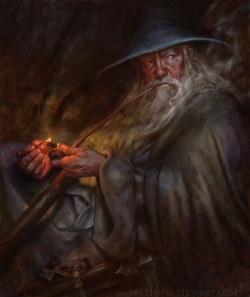 Gandalf by Matthew Stewart
Gandalf by Matthew StewartThe first is Gandalf. In The Fellowship of the Ring, he is of the gray order of the Istari (Maiar wizards), but because of his fall against the Balrog in that first book, he came back as an Istari of the White order, which is one of the most powerful, second only to the Black Order. This book teaches that the Istari are immortal like their masters, the Valar. Gandalf returned as a white-order Istari because of the power vacuum of Saruman, who abandoned his order for power. Saurman did not specifically side with Sauron (which we learn in The Silmarillion). Still, the Palantir corrupted him enough that he thought he could become the most powerful being in Middle-earth.
It isn’t until Gandalf returns that the party nearly ceases calling him by his common “gray” name, Gandalf. Instead, once he takes up the white mantle, most characters call him Mithrandir for the remainder of the series.
Lastly, I would be remiss if I didn’t bring up what confused me the most when I read through the books before reading The Silmarillion—the Dúnedain and Aragorn’s lineage.
Throughout this book, there are constant references to Elendil and Eärendil, but I didn’t know who those people were other than they were Aragorn’s ancestors. Having that foreknowledge made the events and exposition of the story that much more lush and meaningful. It adds weight to Aragorn’s decisions and makes him a more dynamic character. Upon the first read, much of his character felt very one note and much more severe than was necessary. Still, after getting the history behind his lineage, one can genuinely feel the dynamics at play and the choices he must make as he forges his way to coming back to be King of the world of Men.
Come back next week as we continue “The Music of the Ainur” in the Book of Lost Tales!
March 2, 2023
Blind Read Through: J.R.R. Tolkien; The Book of Lost Tales, Part 1, The Music of the Ainur part 2

“Through him has pain and misery been made in the clash of overwhelming musics; and with confusion of sound and have cruelty, and ravening, and darkness, loathly mire and all putrescence of thought or thing, foul mists and violent flame, cold without mercy, been born, and death without hope. Yet is this through him and not by him; and he shall see, and ye all likewise, and even shall those beings, who must now dwell among his evil and endure through Melko misery and sorry, terror and wickedness, declare in the end that it redoundeth only to my great glory, and doth but make the theme more worth the hearing, Life more worth the living, and the World so much the more wonderful and marvellous, that of all the deeds of Ilùvatar it shall be called his mightiest and his loveliest (pg 55).”
Welcome back to another Blind Read! This week we delve into the philosophy of Tolkien as we review “The Music of the Ainur,” the second chapter of The Book of Lost Tales.
Tolkien himself was a deeply religious and highly intellectual man. He surrounded himself with others of all opinions (see his writing group The Inklings, which included C.S. Lewis), and at the forefront of his mind was an anthropologic focus on the world. This curiosity of how the world works is what created the fantasy world we all respect so much.
This chapter, in particular, is about how Ilùvatar (God in this iteration) created the world through his Angels, which he named Valar.
Rúmil tells the story to Eriol and begins his tale by saying, “Before all things he sang into being the Ainur first, the greatest is thier power and glory of all his creatures within the world and without (pg 52).”
This passage marks Ilúvatar as a great creator. There is nothing closer to authentic Christianity than this first chapter, as it shows Ilúvatar’s great power and ability of forethought and humility.
 Iluvatar
IluvatarRúmil goes on, “Upon a time Ilúvatar propounded a mighty design of his heart to the Ainur, unfolding a history whose vastness and majesty had never been equalled by aught that he had related before, and the glory of it’s beginning and the splendour of its end amazed the Ainur, so that they bowed before Ilúvatar and were speechless (pg 53).”
Thus enters the theme of Predestination. Ilúvatar creates a concept that has a beginning and an end. But for such a grand creator, that is not satisfactory because there is no surprise in the world, no joy in watching the events of his grand scheme unfold. To counter this problem, Ilúvatar tells his Angels (they are interchangeably called Ainur and Valar), “It is my desire now that ye make a great and glorious music and a signing of this theme; and (seeing that I have taught you much and set brightly the Secret Fire within you) that ye exercise your minds and powers in adorning the theme to your own thoughts and devising (pg 53).”
Ilúvatar allows the Vala to create the middle of his great tale with their own “secret fire.” We learned in The Silmarillion (and to a lesser extent here) that the Vala all have their own minds, and they all have their passions. This is what the secret fire is, a passion for seeing something created, which is mirrored in Tolkien himself as he created the world of Middle-earth. That is not to say that Tolkien thought himself a god, or even to the level of the Valar, but he saw it as his duty to show that there was great beauty in the world. He wanted to elicit this emotion from people because of his experiences in the Great War. Let me explain:
“Yet sat Ilúvatar and hearkened till the music reached a depth of gloom and ugliness unimaginable; then did he smile sadly and raised his left hand, and immediatly, thoguh none clearly knew how, a new theme began among the clash, like and yet unlike the first, and it gathered power and sweetness (pg 54).”
This passage shows both the power and the weakness of the Valar, which in turn displays just how human they were. Which makes sense because we, as people, are the antecedents of the Angels. Humans are called Ilúvatar’s second children (after the Elves). The Valar wanted to create something with the same power as Ilúvatar, but they became despondent when things turned dark, and their grand theme became black with peril.
Indeed it was Melkor, later called the Dark Lord and master of Sauron, who saw this darkness and believed it was the only way to the end of the story.
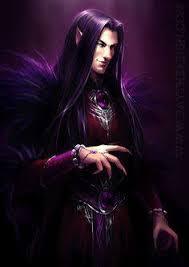 Melkor the corruptor (Source unknown)
Melkor the corruptor (Source unknown)“Mighty are the Ainur, and glorious, and among them is Melko the most powerful in knowledge (pg 54).”
Tolkien believed there was a balance to the world, making Predestination possible. Each Valar had their power or strength; Ulmo had control over water, Manwë had power over the air (The great eagles which bore Gandalf away from Orthanc and Frodo and Sam away from Mount Doom were agents of Manwë), and Aulë had control of the earth. But it was Melkor who had the greatest knowledge, and what Tolkien learned in World War I was that one could have a perception of darkness or a general concept of pain, but until you have the experience, you never really have knowledge of it.
Knowledge equals pain, which is a prime theme in Tolkien’s work. That may seem particularly depressing, but you cannot appreciate the most glorious mornings until you see the darkest of nights (this echoes in Sam’s speech at the end of The Two Towers. “They were holding on to something…”). Ilúvatar created Melkor to have the knowledge and sing about that knowledge which fostered despair in the world, but he could do nothing to change it. He became the Dark Lord because once the Children of Ilúvatar were created, they received gifts to experience the world’s joys and perils, whereas Melkor could only see troubles and darkness.
The Eldar were given long life and foresight that they would live to see the end of all time, which made them happier than humans. But to humans, Ilúvatar gave the gift of death.
Doesn’t it seem like much of a gift? Well, it harkens back to the question of knowledge. If you knew your time was short, you would live a more extraordinary life, a life filled with great pain and great joy, rather than being stuck in the middle and being “emotionless” as the Elves were.
This ability to have great highs and lows was specifically why Ilúvatar sang Melkor (also known as Morgoth) into existence. He knew what the Valar would do, but also knew it was necessary for a full experience of the world.
Come back next week for a recap and reread of “The Two Towers!”



